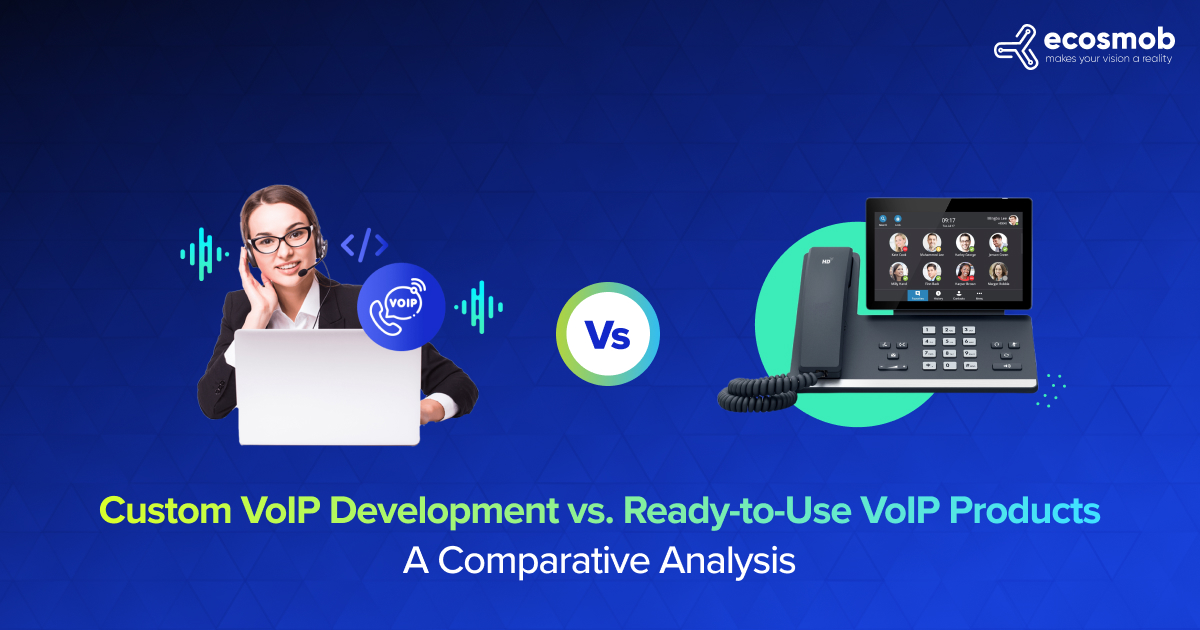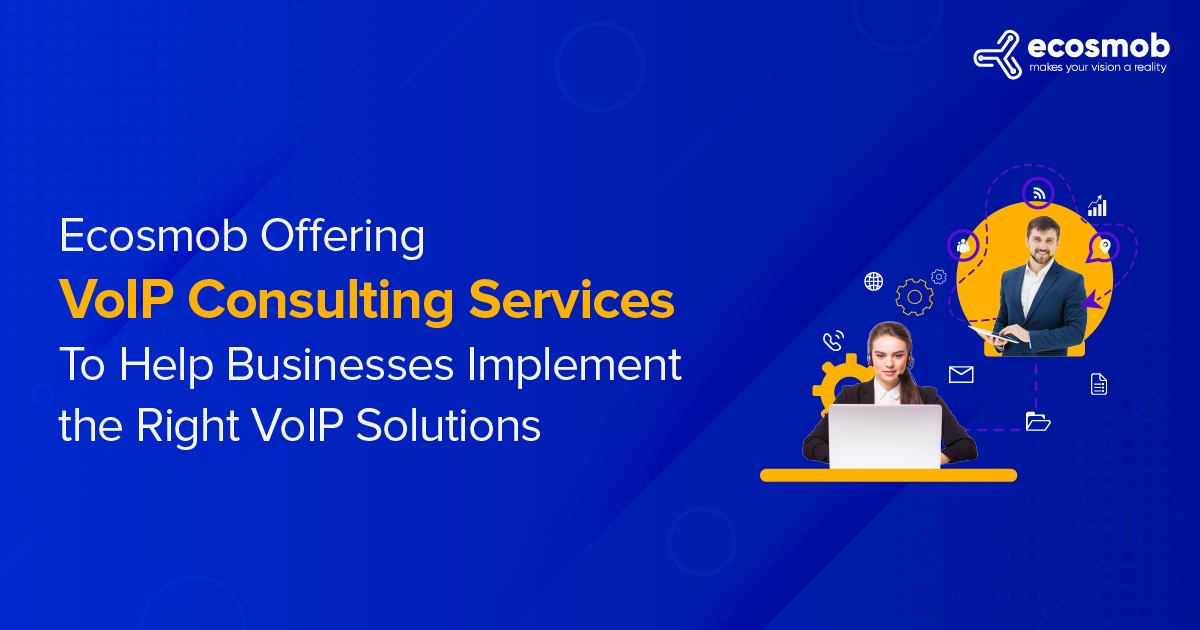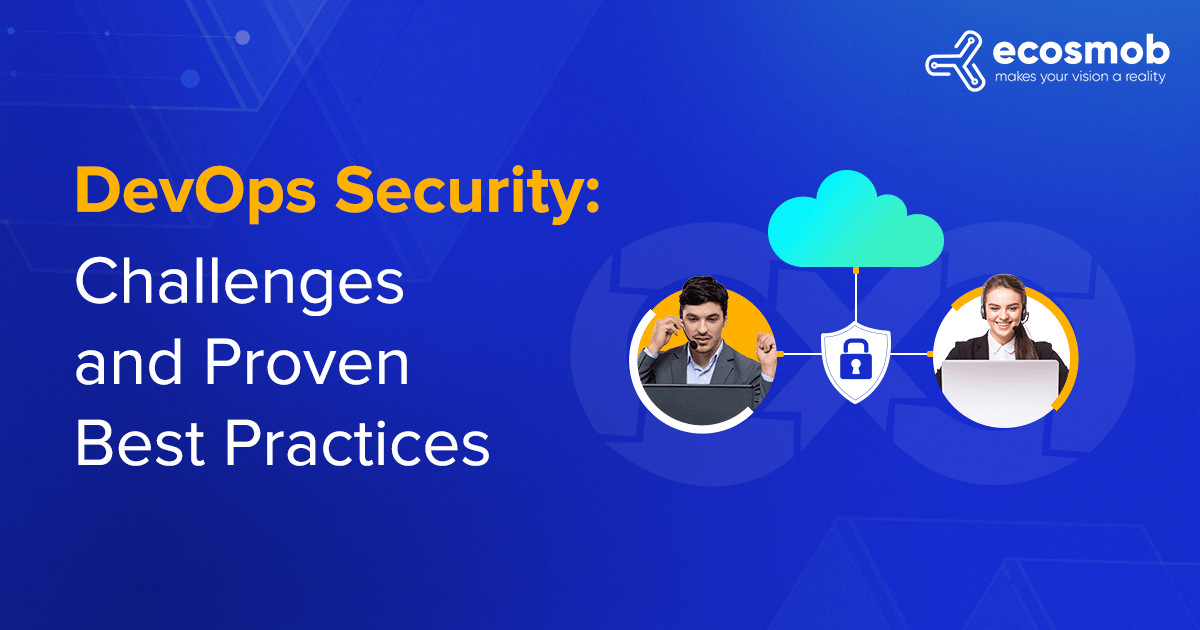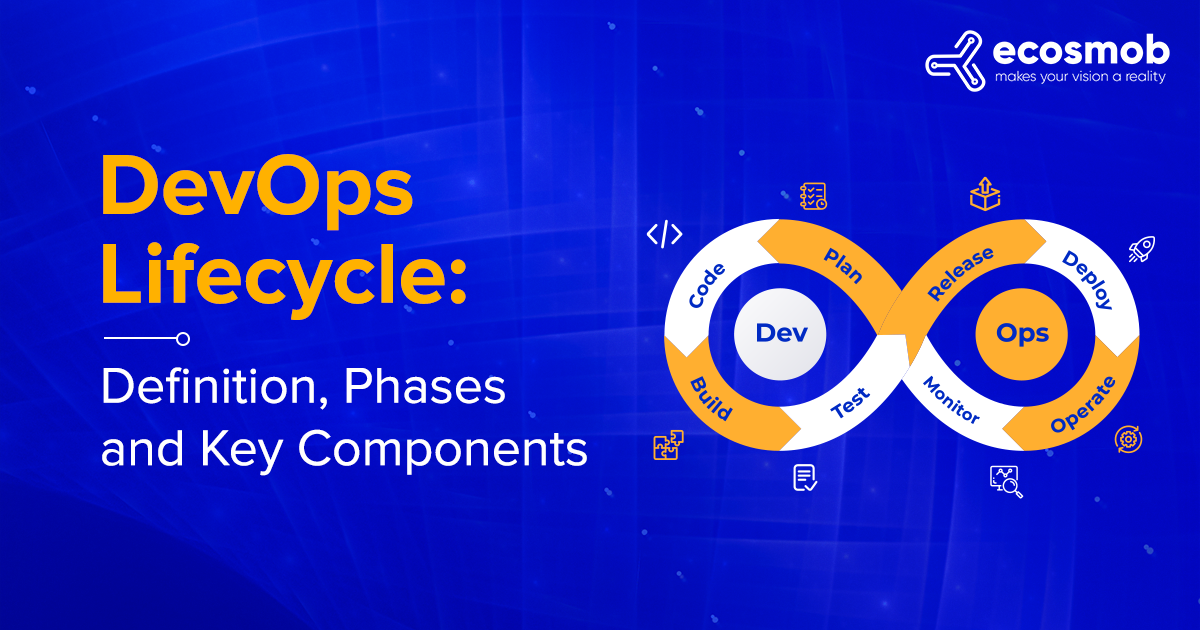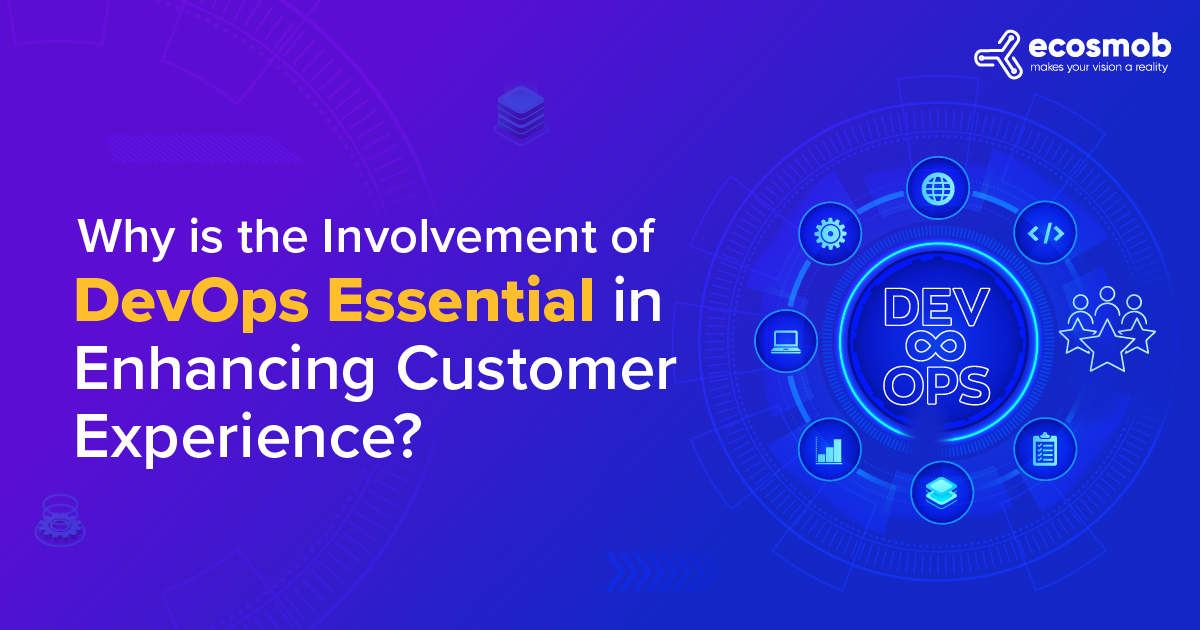QUICK SUMMARY
Here’s what you need to know about DevOps and DevSecOps and why security can’t be an afterthought in modern development. The blog explores the biggest security challenges in DevOps and shares proven best practices for integrating security seamlessly without slowing down innovation.
Is your DevOps pipeline moving at lightning speed but leaving security behind?
You’re not alone!
While DevOps streamlines development using Agile methodology, security often takes a backseat in the rush to deliver products faster.
The downside?
Vulnerabilities that could put your applications at risk. That’s why integrating security practices into the DevOps pipeline – also known as DevSecOps – is crucial.
If you’re considering implementing DevOps, you’re in the right place! With Ecosmob, a leading IT services provider, you can build secure applications without compromising speed. Let’s dive into DevOps security and how to tackle its biggest challenges!
Is Your DevOps Team Struggling With Security Challenges?
What is DevOps Security?
DevOps security refers to integrating security practices within the DevOps framework. Traditionally, DevOps focuses on collaboration between development (Dev) and operations (Ops) teams to deliver software faster and more efficiently. However, security is often added after the development process is complete, which can expose vulnerabilities.
In DevOps security:
- Security tools like automated vulnerability scanning, access control, and code analysis are integrated during the CI/CD pipeline.
- While security is included, it’s often seen as one step in the process rather than a shared responsibility throughout the DevOps software lifecycle.
And What is DevSecOps?
DevSecOps (Development, Security, and Operations) takes things a step further by embedding security at every stage of the software development lifecycle. Instead of adding security at the end, DevSecOps ensures security is integrated from the very beginning—right from design, development, testing, deployment, and maintenance.
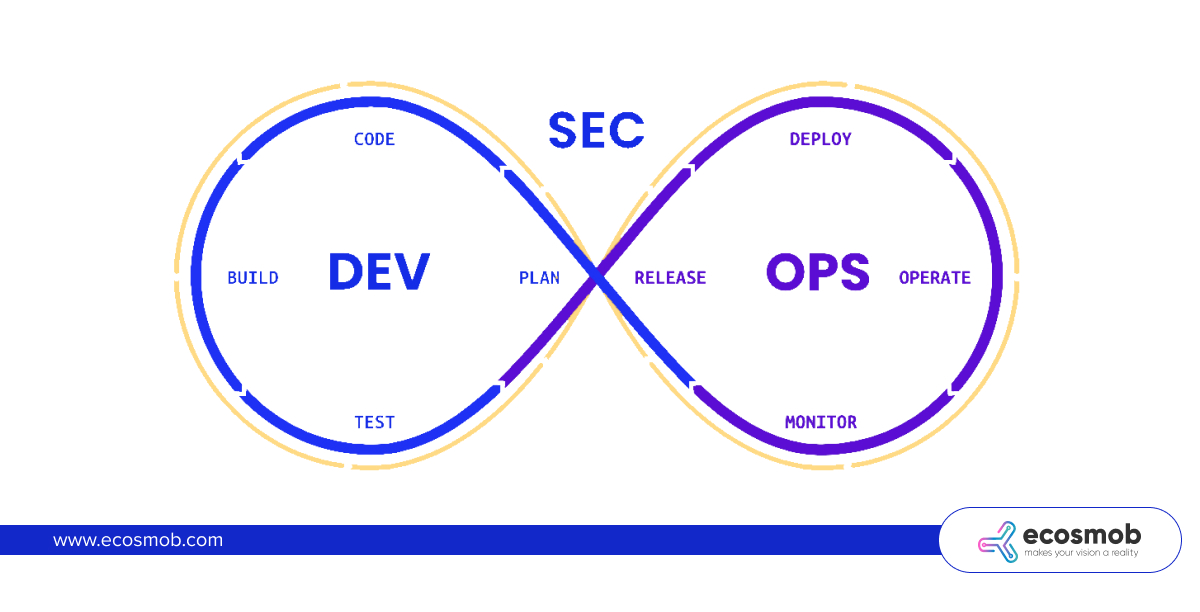
What Differs DevOps and DevSecOps?
While both focus on improving software delivery, their approaches to security set them apart. Let’s see what sets them apart.
| Aspects | DevOps Security | DevSecOps |
| Focus | Primarily on speed and efficiency, with security added later. | Focuses on integrating security throughout the entire development lifecycle. |
| Timing | Security is often a final step before deployment. | Security is integrated from the very beginning. |
| Ownership | Security is often handled by a dedicated security team. | Security is a shared responsibility for developers, operations, and security teams. |
| Tools Used | Vulnerability scanners, firewalls, etc., were applied late in the pipeline. | Security automation tools like SAST, DAST, and container DevOps security tools are integrated from the start. |
Now, let’s talk about some challenges organizations face when implementing DevSecOps.
What are the Major DevOps Security Challenges?
Secure DevOps can be affected by various technical and cultural concerns, but the most significant security problems typically result from the divide between the DevOps security and development teams. While the security team prioritizes fixing security problems, development frequently slows down while developers seek to deliver the program as soon as possible.
These are the most significant DevOps security challenges.
1) Faster Development Process
A DevOps method’s rapid pace might increase code errors, which may leave defects and errors unnoticed. Attackers search for coding errors they can take advantage of to access digital assets.
2) Serverless Computing
The phrase refers to a cloud computing strategy in which the service provider manages the resources for the infrastructure. The cloud platform addresses the security in DevOps of the apps hosted on it. Organizations need some help with transitioning to a serverless computing environment. You may only sometimes be able to predict how the platform’s security will operate once you deploy your applications or data to the cloud. The disclosure of sensitive data during relocation is a further worry.
3) Collaboration Difficulties
The cooperation of two teams – development and operations—is necessary for DevOps. Unifying their procedures can be difficult because they are used to operating in silos. Roles and policies that need to be clarified can leave DevOps security weaker.
4) DevOps Process’s Interdependence
The necessity of ongoing team cooperation is one of DevOps’ hallmarks. You can exchange privileged information in this highly networked world. Systems such as applications, containers, and microservices share tokens and passwords. DevOps environments sometimes fall victim to inadequate secret management. It gives attackers a way to sabotage operations and steal data.
5) Lack of Security Expertise
One of the biggest challenges of DevOps Security is the need for more security expertise within DevOps teams. DevOps teams are typically focused on software development and deployment and may need to gain the necessary security knowledge and skills to identify and mitigate security risks.
6) Security Implementation in CI/CD
Security has consistently been implemented last in a typical, siloed development environment. A DevOps security team typically performs security testing after the development phase but before the application is released into production. It can be challenging to include security in the pipeline.
The slow pace of the DevOps method clashes with security teams’ natural tendency to spend their time securing every component of the code. DevOps Security vulnerabilities can occur from the integration phase until the DevOps paradigm is fully operational. DevOps Security presents several challenges that ensure the software is delivered quickly, reliably, and securely.
Organizations must invest in employee development and training programs to overcome this challenge. So, what are some tips for overcoming DevOps security challenges?
DevOps Security Best Practices to Overcome Security Challenges
It can be challenging to ensure the security of your application development. The following tips and tricks can prevent DevOps security challenges and are an excellent place to start when updating your security procedures.
Tip 1: Assign the Responsibility of Security Surveillance to a Dedicated Resource
To address the DevSecOps security challenges, Ecosmob Technologies recommends assigning one person on the DevOps team the responsibility for security. This person should have a complete understanding of DevSecOps best practices and the ability to communicate effectively with the development and security teams.
By having a dedicated security person on the DevOps team, organizations can ensure that security is integrated into every stage of the development process, from design to deployment.
Tip 2: Determine the Compliance Prerequisites
Saves time and headaches by detecting cloud DevOps security & compliance and designing the security policy accordingly. So, you can automate cloud DevOps security & compliance reports for maximum efficiency. For instance, you could configure the audit logs to automatically upload to a shared read-only folder with the auditor in real-time. When it’s time for the audit, this can assist you in skipping the last-minute log search.
Tip 3: Deploy Threat Modeling
It would be best to target the pipeline process. Find the CI/CD pipelines and the product’s weak points. Then configure your security as necessary.
Tip 4: Examine the Cloud Architecture
Verifying that cloud security is compatible with your application’s requirements is a best practice. By doing this, ensure your internal security procedures align with the cloud providers. You could improve your security posture as a result.
Tip 5: Incorporate Security Early in the Life Cycle
Incorporating security checks early in the software development lifecycle can minimize the number of patches. Ecosmob Technologies suggests using security automation and new trends in DevOps security tools that can scan for vulnerabilities in the code, detect potential security threats, and provide recommendations for remediation. This integration ensures that security is not an afterthought but an essential area of the development process.
By focusing on the above-given tips, organizations can overcome DevOps challenges and deliver high-quality software quickly and efficiently.
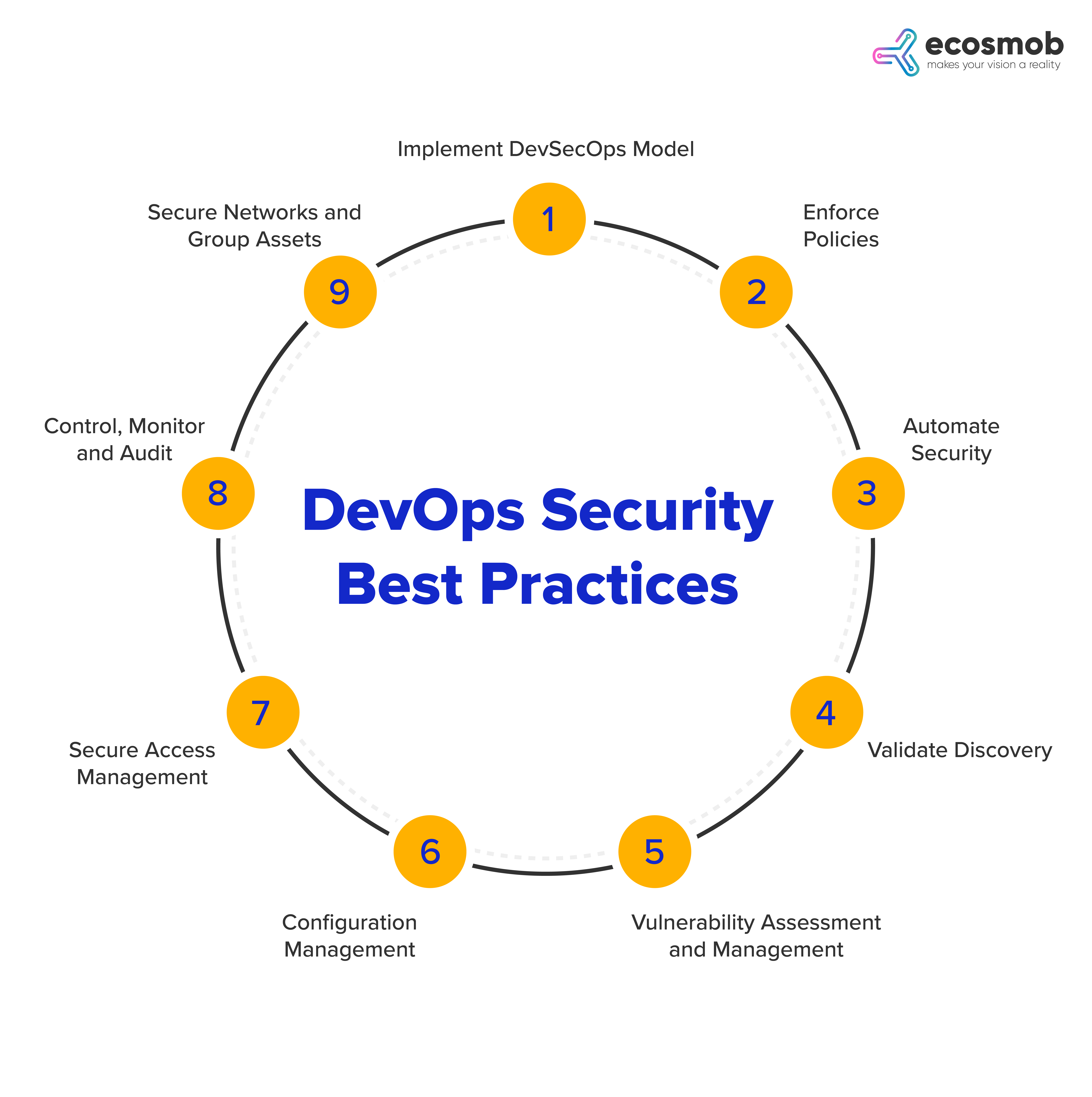 What are DevSecOps Principles for Security?
What are DevSecOps Principles for Security?
To effectively implement DevSecOps, organizations follow key principles like –
- DevOps security Automation First – Automate security tests, code analysis, and compliance checks to speed up processes without compromising security.
- Shift Left Approach – Security testing starts early in the development phase rather than waiting until deployment.
- Collaboration & Culture – Encourage developers, security, and operations teams to work together as one cohesive unit.
- Continuous Monitoring – Implement real-time monitoring to detect vulnerabilities and threats throughout the software lifecycle.
- Threat Modeling – Regularly assess potential security threats and implement proactive measures.
What are the Benefits of DevSecOps?
DevSecOps solutions for businesses and organizations have been a popular approach to achieving this goal, focusing on collaboration, DevOps security automation, and continuous delivery. It is where DevSecOps comes into play. DevSecOps integrates security practices into the DevOps process, from design to deployment. It aims to embed security into every stage of the development pipeline, ensuring that security is an integral part of the development process.
Increased Security
With DevSecOps, security becomes an inherent development process. Security is no longer an afterthought or an add-on but a fundamental aspect of the development pipeline. It ensures that security vulnerabilities are identified and addressed early in the development process, reducing the risk of security breaches.
Faster Time to Market
Enables organizations to release software faster while maintaining the required level of security. It is because security is in the development process, and security testing can be automated, making the process quicker and more efficient.
Improved Collaboration
Encourages collaboration between development, operations, and security teams. It helps to break down silos and promotes a culture of shared responsibility, ensuring that everyone is working towards the same goal.
Cost-Effective
Help organizations to save costs in the long run. By identifying security vulnerabilities early in the development process, organizations can avoid expensive security breaches and reduce the cost of fixing DevOps security issues in production.
To implement DevSecOps successfully, organizations need to adopt a holistic approach that involves people, technology, and processes. It requires a cultural shift toward a security-first mindset and implementing security testing tools and automation.
How to Embed DevOps Security in the Software Development Lifecycle?
Integrating security into your DevOps workflow requires strategic steps across the development stages:
1. Plan Phase:
- Identify potential security risks early.
- Establish clear security policies and guidelines for developers.
2. Develop Phase:
- Use secure coding practices and tools like SAST (Static Application Security Testing) for real-time code analysis.
- Implement pre-commit hooks to catch vulnerabilities before code enters the repository.
3. Build Phase:
- Integrate security scans within CI/CD pipelines to automate vulnerability detection.
- Ensure third-party libraries and dependencies are regularly updated and verified.
4. Test Phase:
- Conduct automated DAST (Dynamic Application Security Testing) to simulate real-world attacks.
- Perform penetration testing to uncover hidden threats.
5. Release Phase:
- Implement security checks before deployment to ensure no unresolved vulnerabilities.
- Use container security tools to scan images for risks.
6. Deploy Phase:
- Adopt Infrastructure as Code (IaC) security checks to ensure secure configurations.
7. Monitor Phase:
- Continuously monitor applications and infrastructure for suspicious activities.
- Use tools like SIEM (Security Information and Event Management) for proactive threat detection.
To achieve this, organizations can seek the help of DevOps consulting services that specialize in DevSecOps. These services can guide and support in implementing DevSecOps and help organizations build a culture of security within their development teams. DevSecOps is essential for organizations that want speed and security. By integrating security into the development process, businesses can reduce the risk of security breaches, release software faster, improve collaboration, and save costs in the long run.
In a Nutshell
Security isn’t something you can afford to put off – one breach can be disastrous.
But let’s be real, constantly patching vulnerabilities can slow down your development pipeline. That’s why weaving security policies and protocols into your DevOps process from the start just makes sense. By integrating security testing and controls early on, you can make adjustments on the go, ensuring a smooth, secure, and efficient delivery.
Want to build a truly secure DevOps environment?
Start with the insights in this article. And if security challenges still keep you up at night, we’re here to help!!!
At Ecosmob, our DevOps Security Consulting services ensure your systems stay protected without compromising speed. Our experts can identify risks, implement security measures, and provide ongoing support to keep your DevOps process secure and hassle-free.
Do You Want to Ensure the Security of Your DevOps?
FAQs
What is DevOps?
DevOps is a software development approach that combines development (Dev) and operations (Ops) to improve collaboration, automate workflows, and speed up software delivery.
How does DevOps differ from traditional software development?
Traditional development follows a siloed approach where development, testing, and operations are separate, leading to slower releases. DevOps integrates these processes, enabling faster, more efficient deployments.
What are the key benefits of DevOps?
Faster software delivery, Improved collaboration between teams, Automated processes and infrastructure, and Increased system reliability are some of the key benefits of DevOps.
What is DevSecOps, and how is it different from DevOps?
DevSecOps is an extension of DevOps that integrates security into every stage of the software development lifecycle, ensuring security is a shared responsibility rather than an afterthought.
Why is DevSecOps important?
With rising cyber threats, embedding security from the start reduces vulnerabilities, minimizes risks, and ensures compliance without slowing down development.


